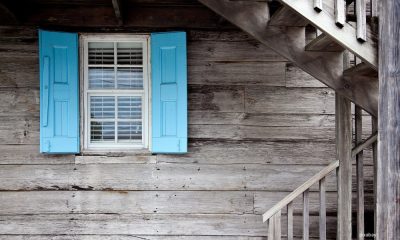Management
How To Keep On Top Of Property Maintenance

Landlords new to property investment need to consider all the potential outgoings that occur throughout the ownership of the property. It’s the hidden costs that can put a strain on cashflow and can burn through the profit.
Before rushing in with any real estate purchase, seasoned real estate investors are aware ongoing property maintenance is essential and it’s the one area of investing that’s often overlooked, particularly by the new investors.
To do so, can be at the homeowner’s peril too, as maintenance of core exterior and interior components if left unchecked can become a much bigger issue. Costs can spiral seemingly out of control with building repairs. The time to fix bigger job could also result in a loss of rent if vacancy for repair is required.
A building inspection prior to purchase will identify the areas that need regular routine maintenance. Plus it can present any outstanding minor or more noteworthy issues that may or may not be a deal breaker on the purchase or give the purchaser reason to renegotiate the purchase price. The inspector can often also present other findings about the building and how it may cope should in a major weather event, like an earthquake or hurricane.
Regular inspections and upkeep will require an annual fund. The property care fund should cover the cost of the inspection, maintenance and unexpected repairs.
Maintenance Fund
How much money should be in the fund? This really depends. The age of the building will dictate what’s likely to need work during the year. Older homes will have wear and tear infrastructure that earlier owners have put off like plumbing pipe repair or replacement of electrical wiring.
Some advice suggests owners of residential homes should put away 4% of the property value per year for repairs, so that would be $8,000 on a building that costs $200,000. However the actual requirement throughout the year is likely to be a lot less.
Ongoing commitment to the fund, however, does mean you’ll have the funds for the larger purchases as and when required, like replacement plumbing or a new kitchen or bathroom. What will keep the actual outgoings to a minimum for you will be regular inspections.
Regular Inspections
High use systems, load bearing structures and exteriors are the focus of regular inspections. Yes they may reveal what you don’t want to hear but ignorance is not bliss and will end up costing you more so get these areas of your property checked out annually:
- Foundations
- Load bearing walls, beams
- Roofing
- Cladding
- Windows
- Plumbing and pipes
- Electrical systems
- HVAC systems
The goal of any property inspection is to identify potential areas of weakness, that need to be remedied or if left as is, could bloom into a major repair job resulting in replacement which would be at a much higher cost. Therefore make a list of the jobs needing attention and prioritise them.
Make a List of Maintenance Requirements
If during an inspection there’s a long list of repairs to do:
- Create a list of pending repairs
- Put a priority level for each repair
- Get the job done in order of priority
Once you’ve itemised the jobs that need attention and the action to be taken, follow through until completion. This attention to detail is what makes or breaks profitability and therefore investors need focus and discipline to make sure all the small jobs are taken care of before they get out of control and threaten the viability of the investment.






